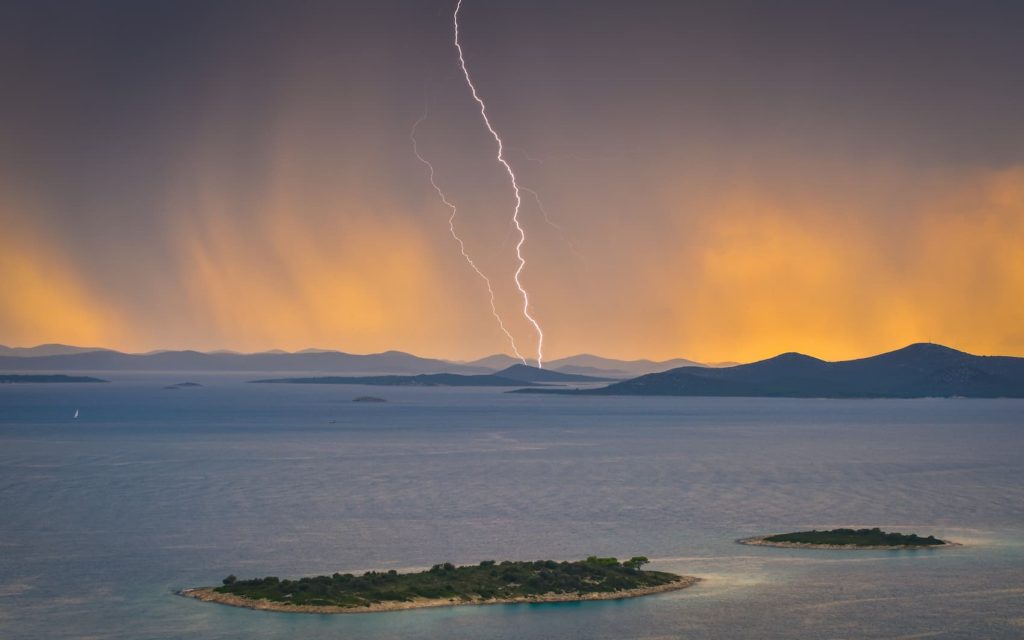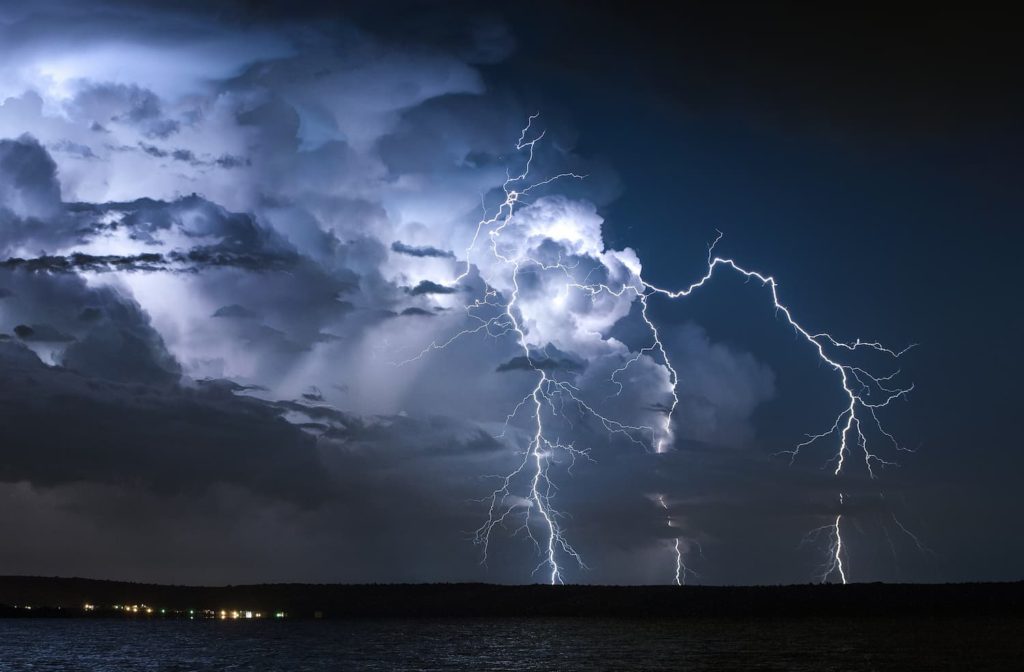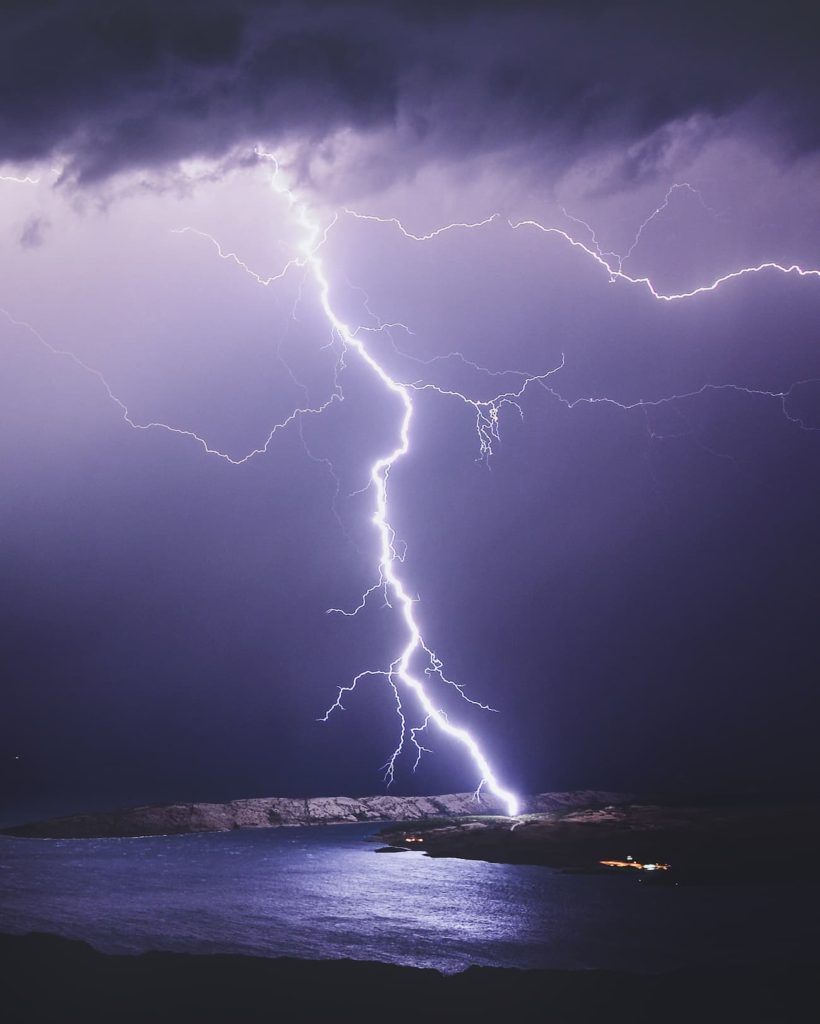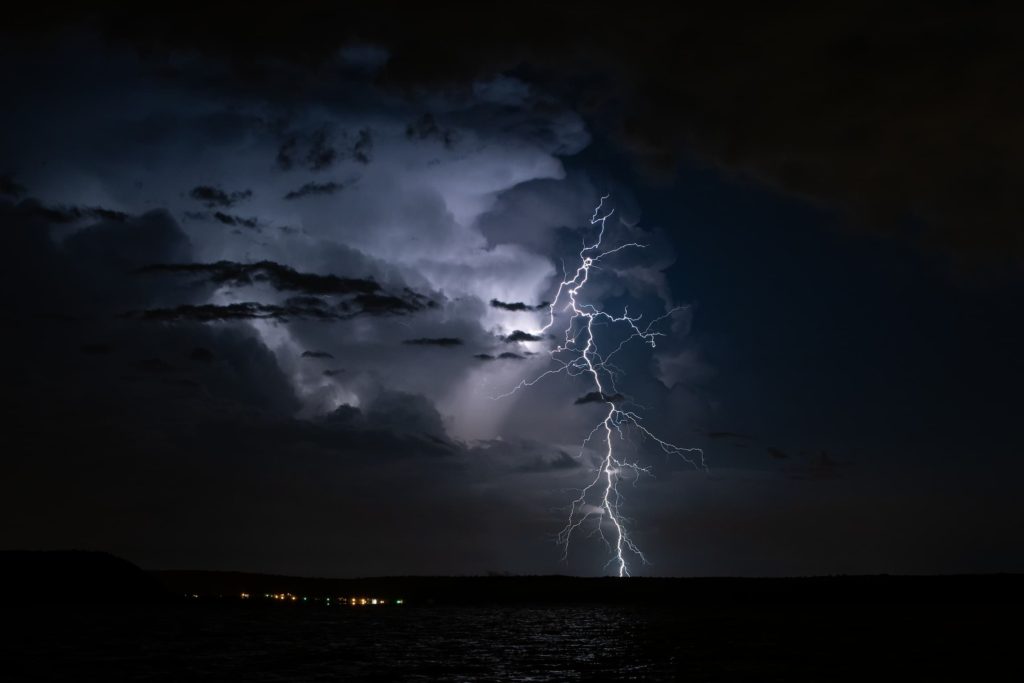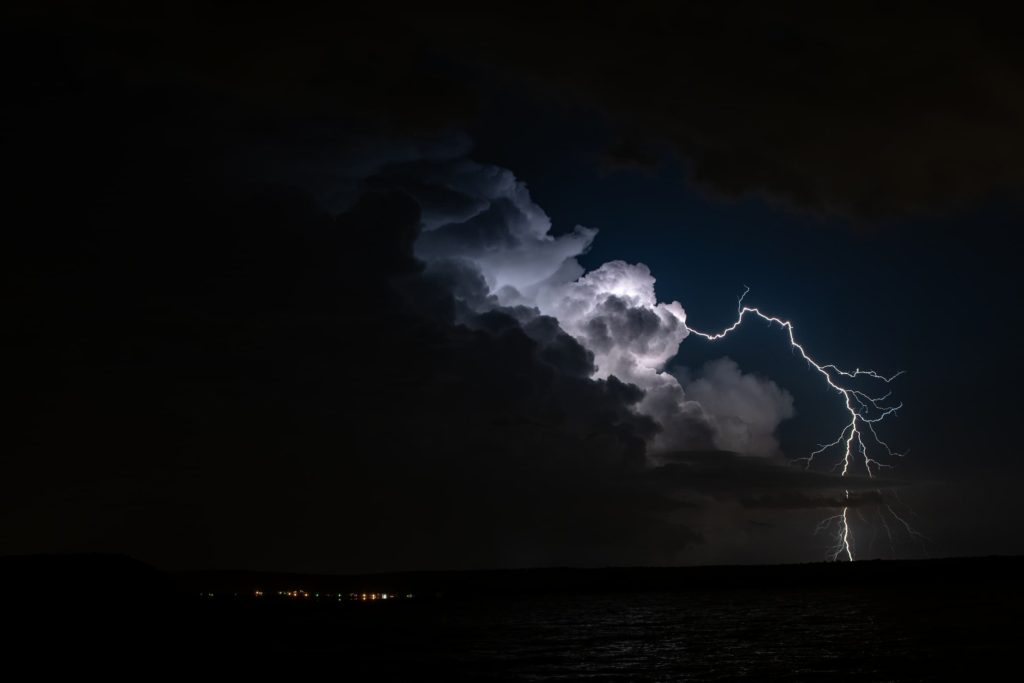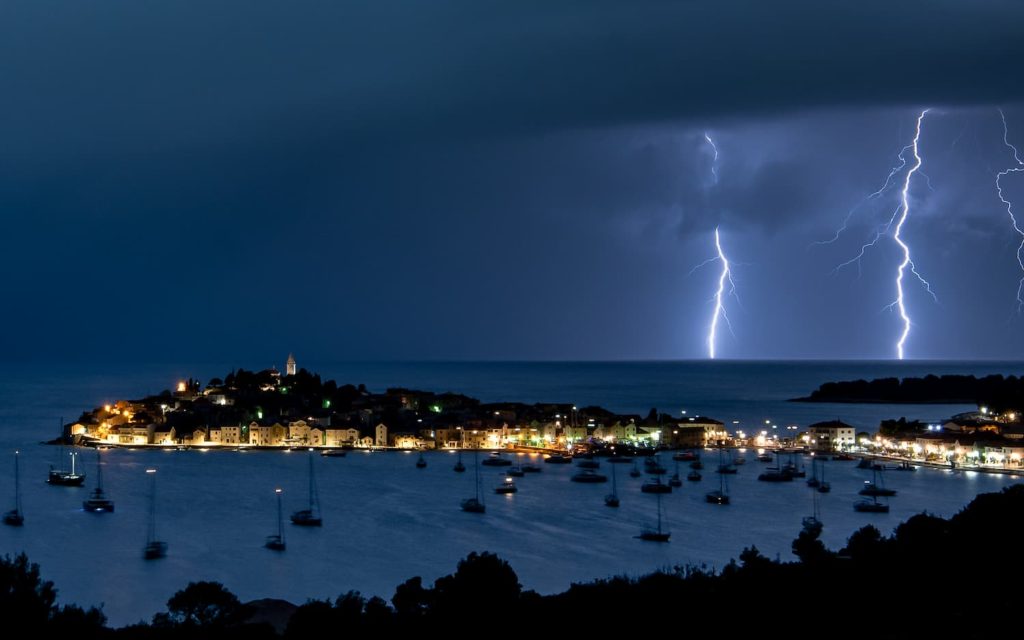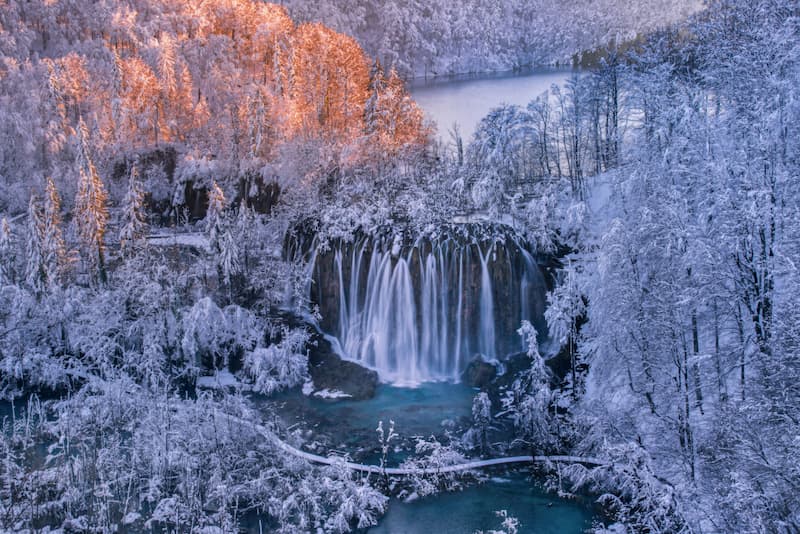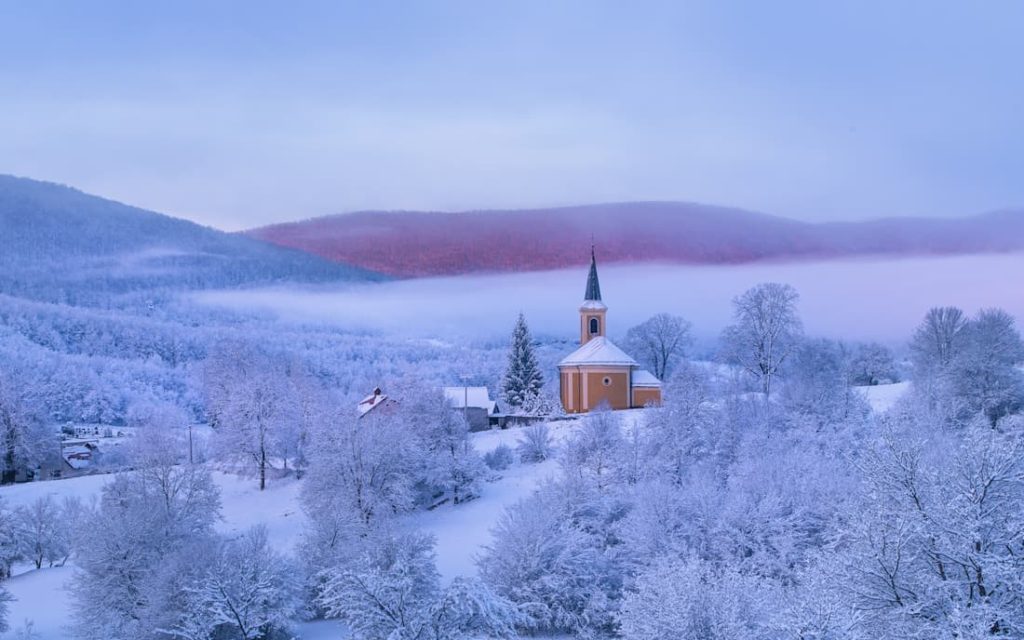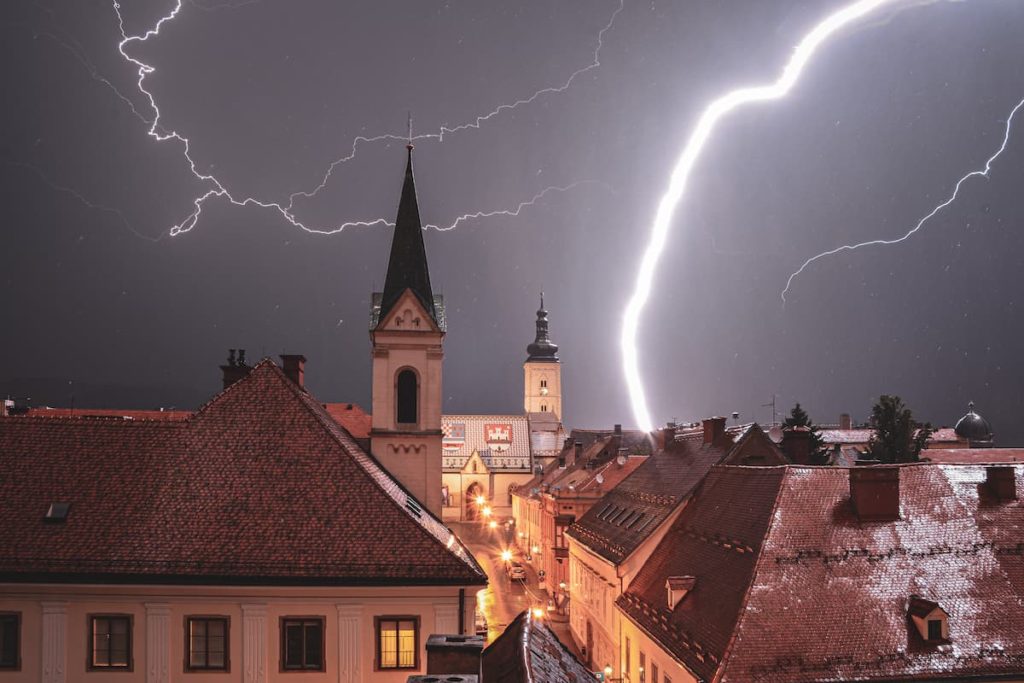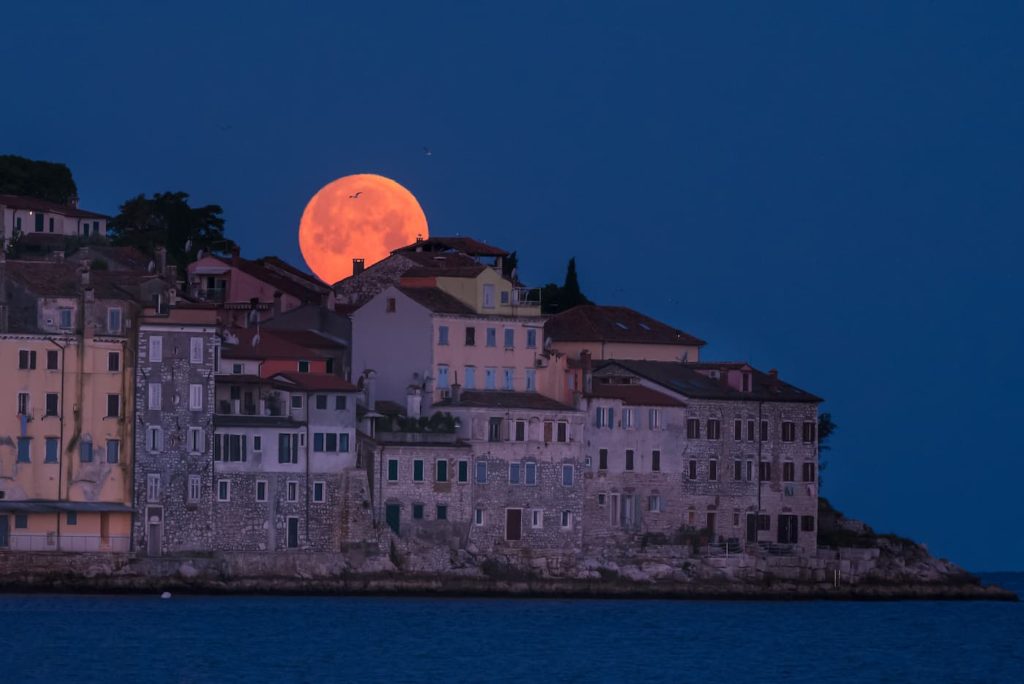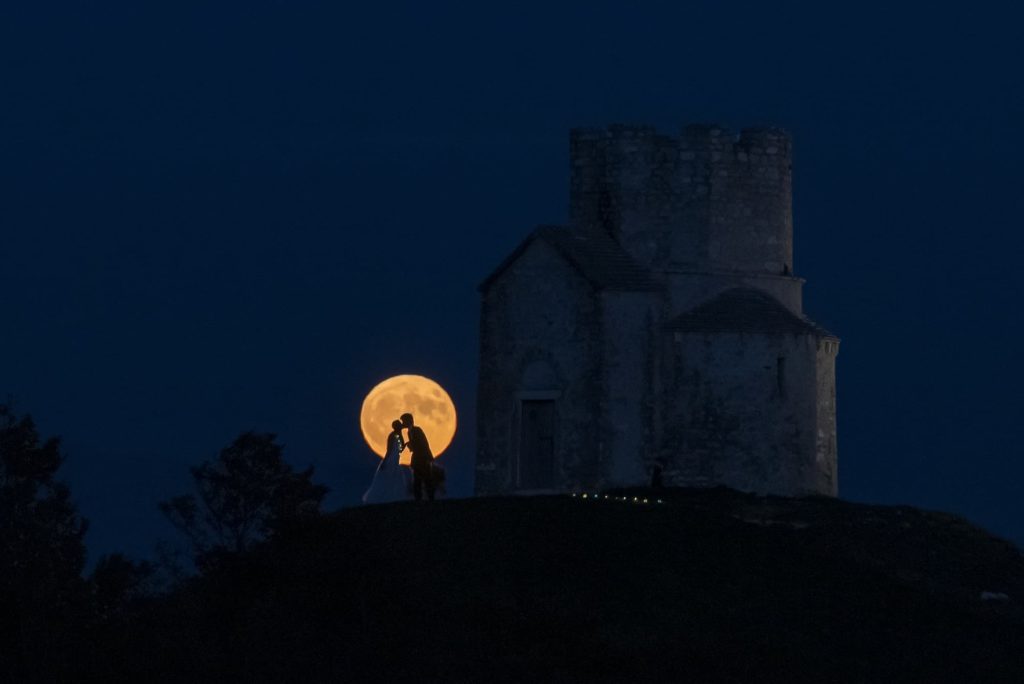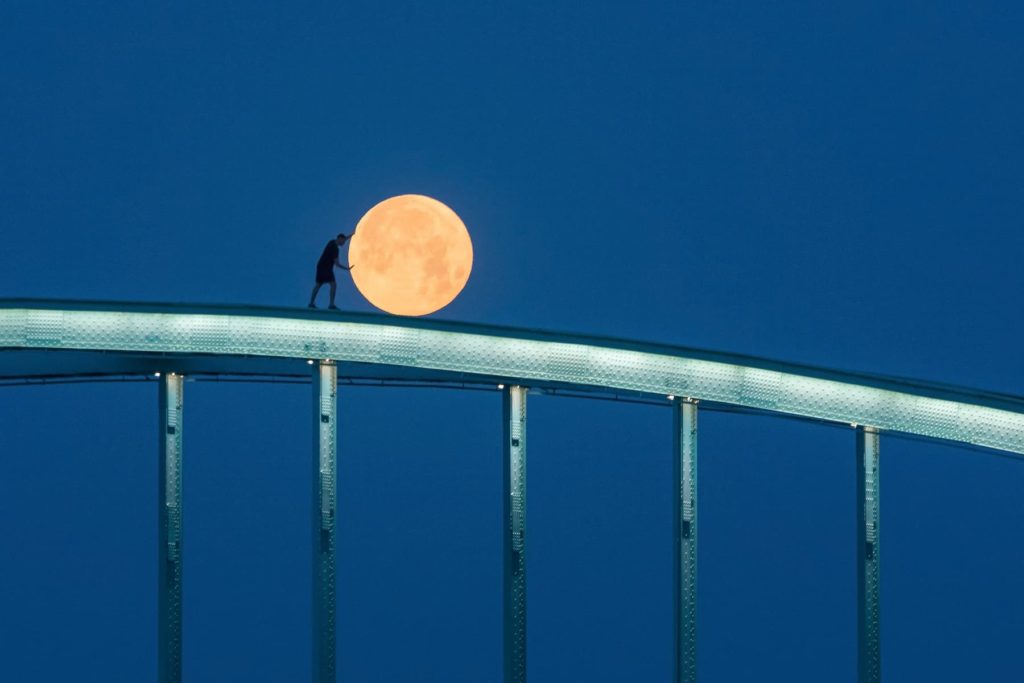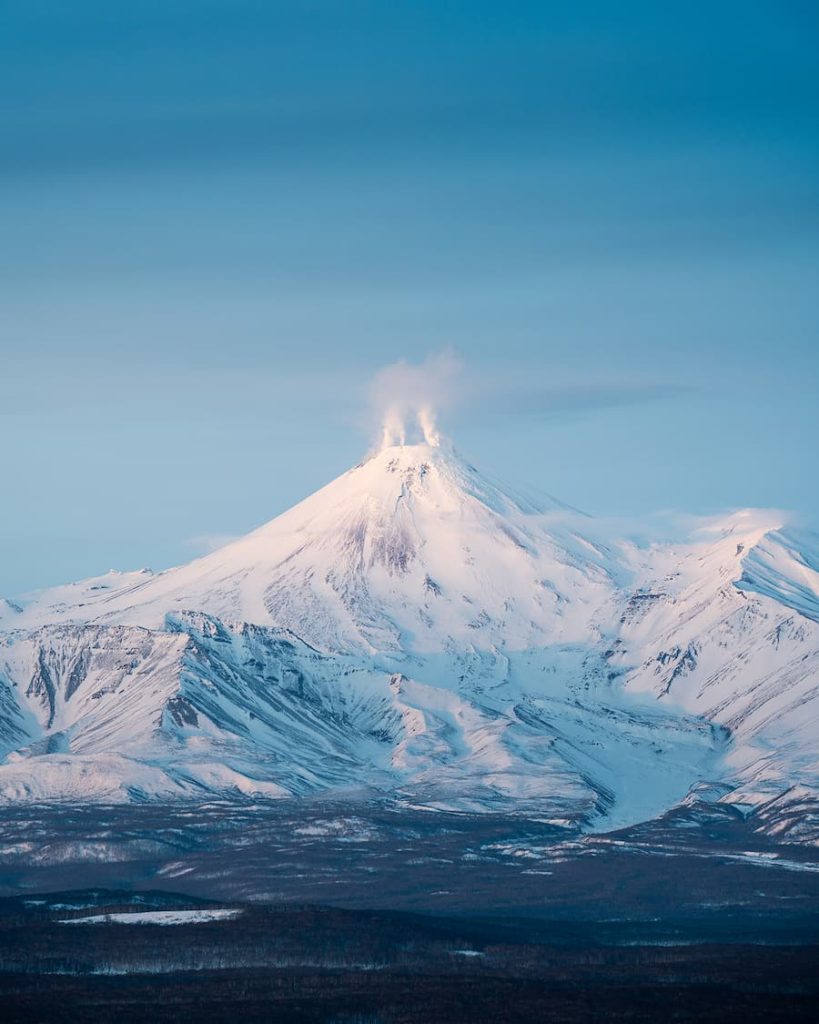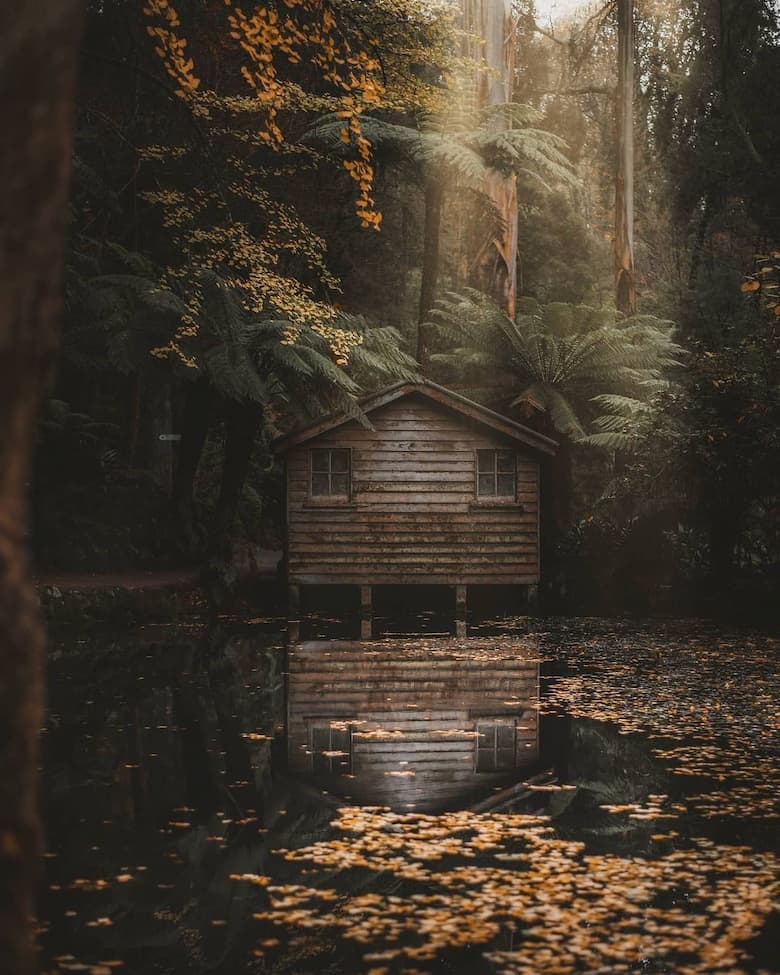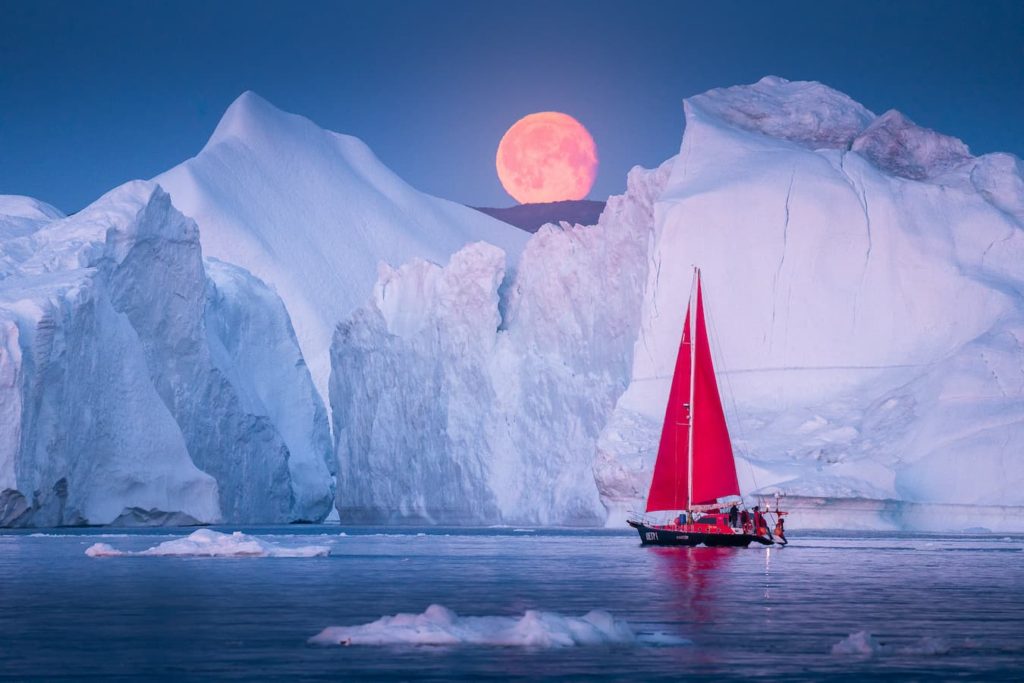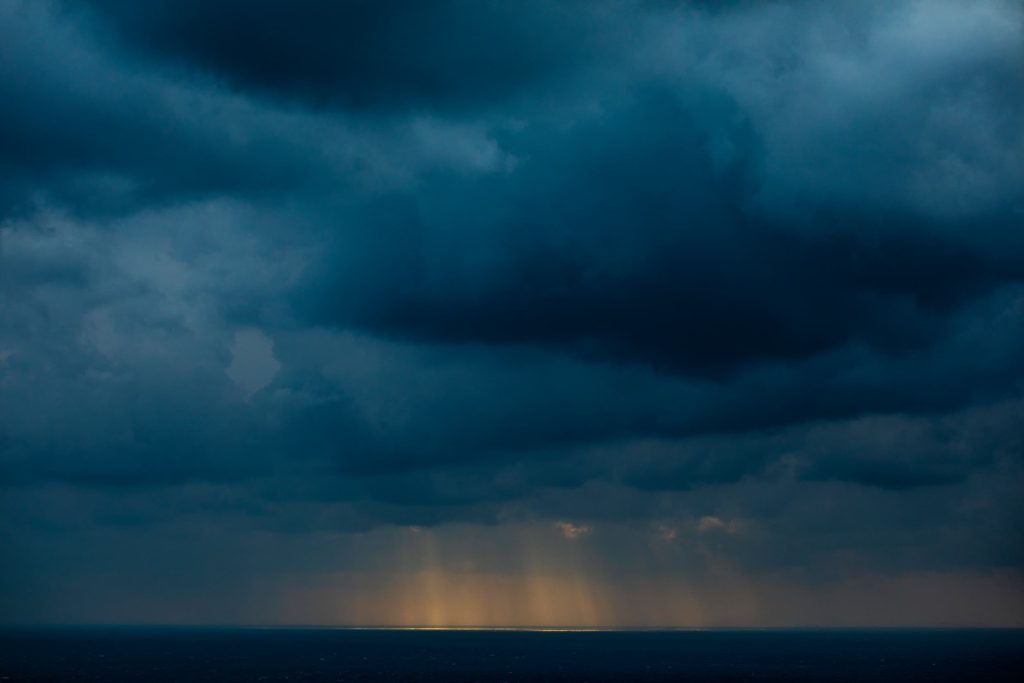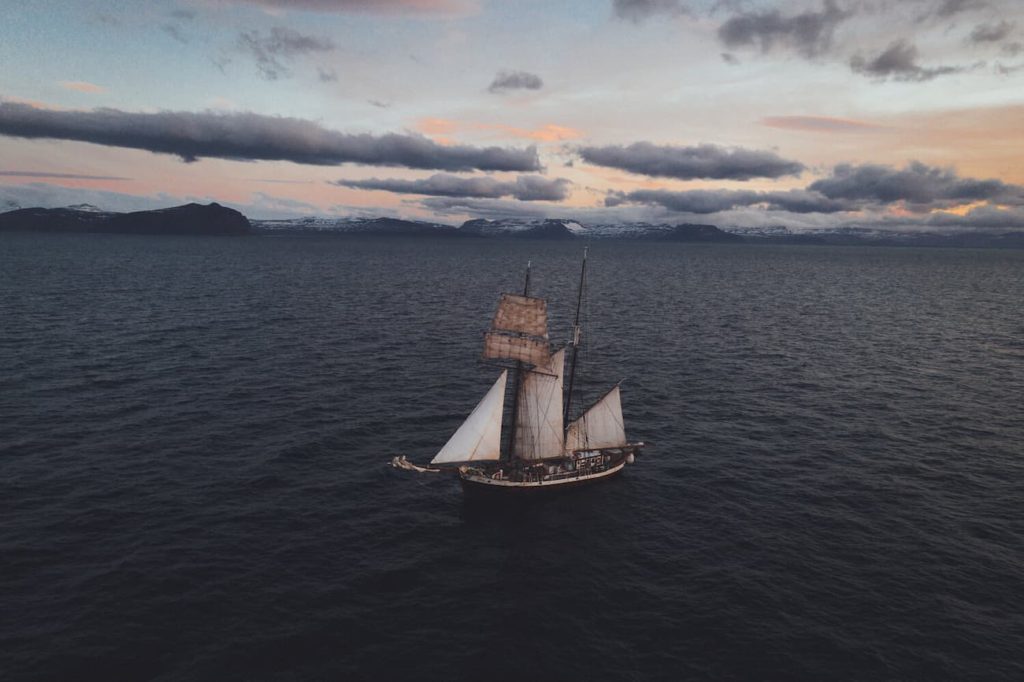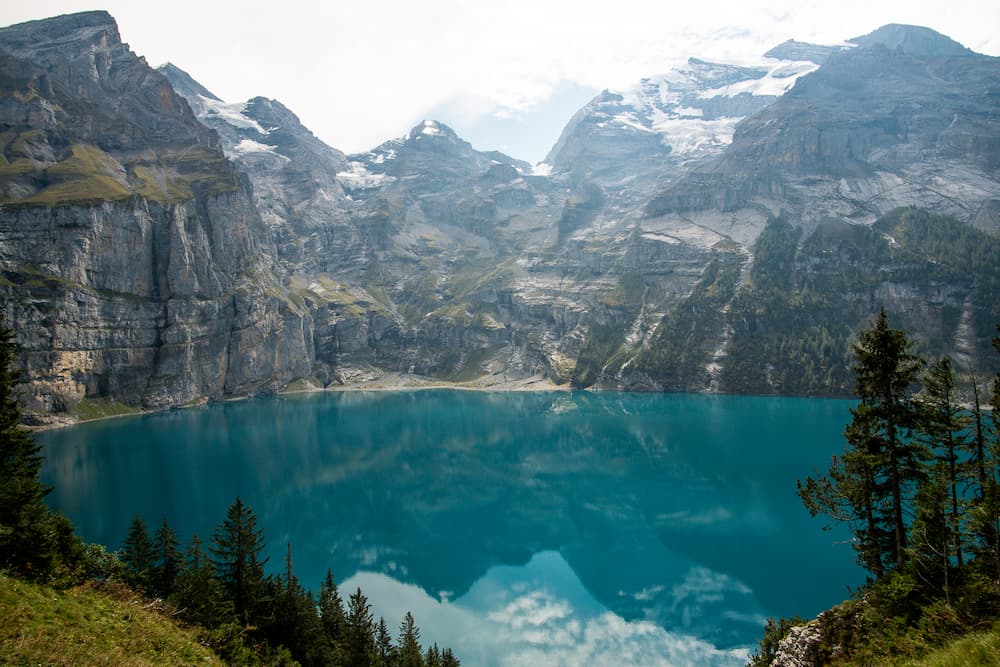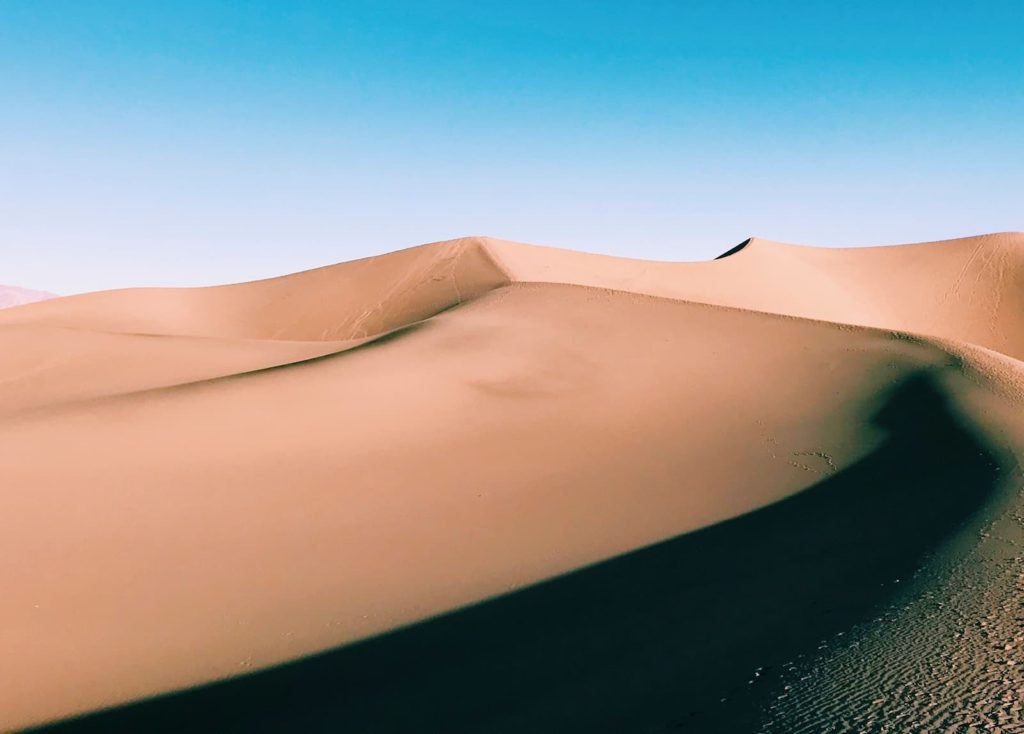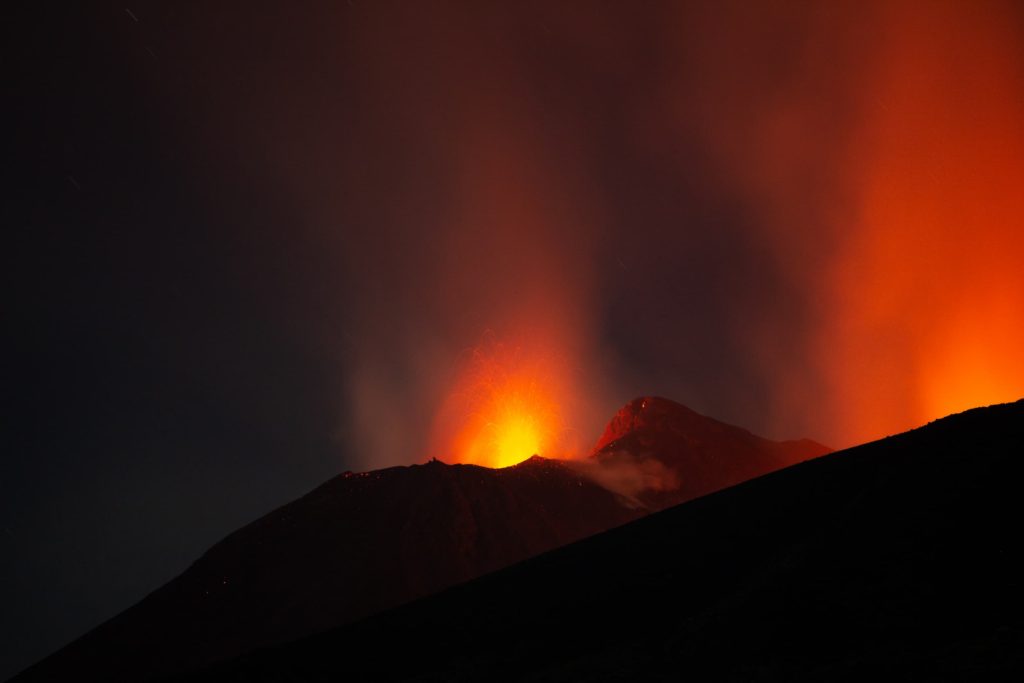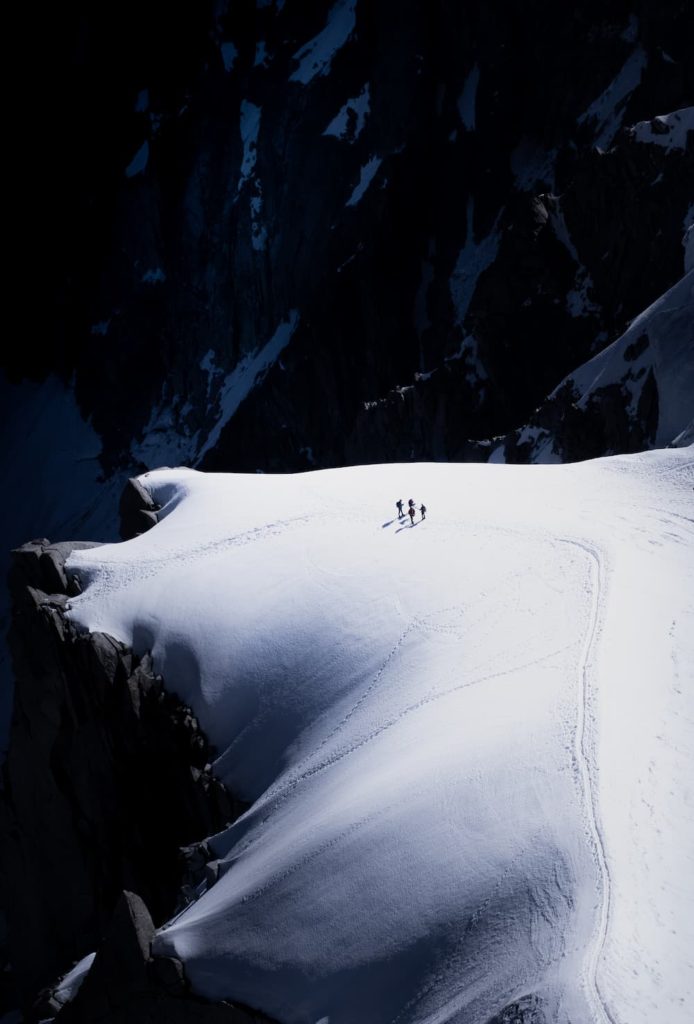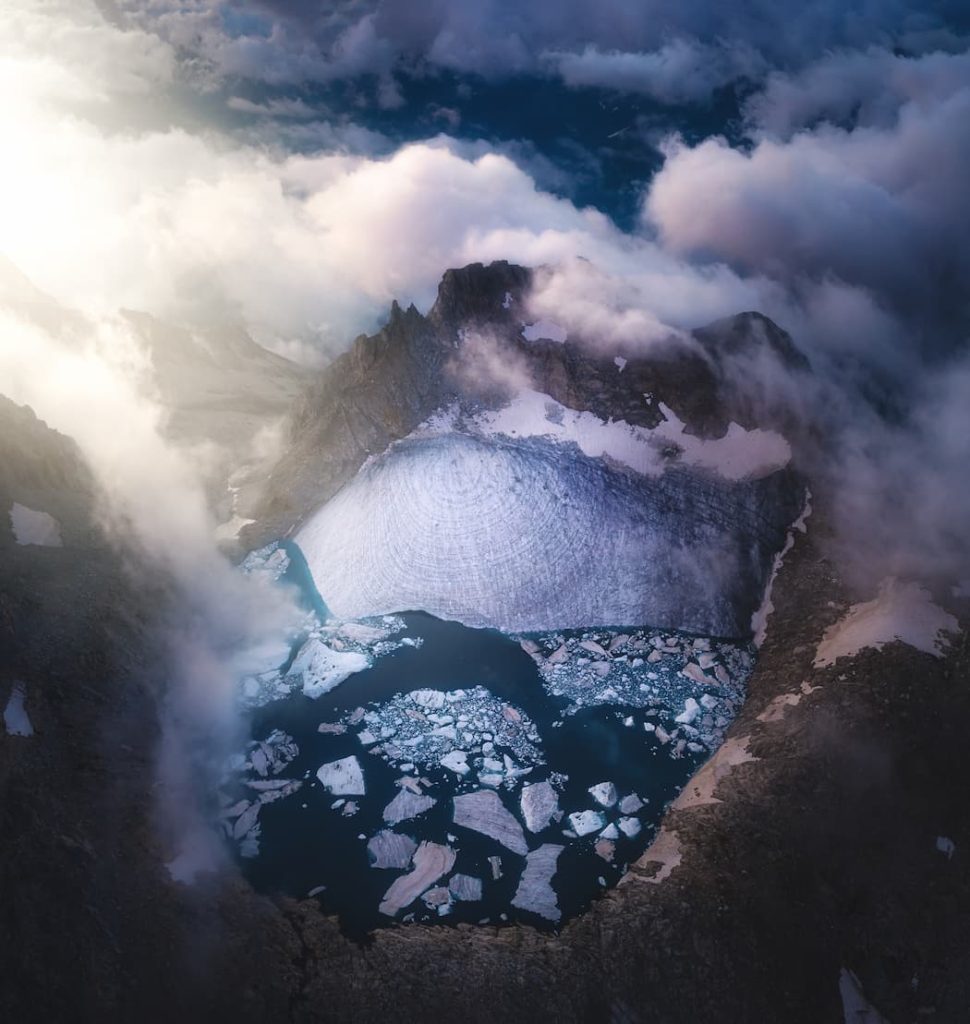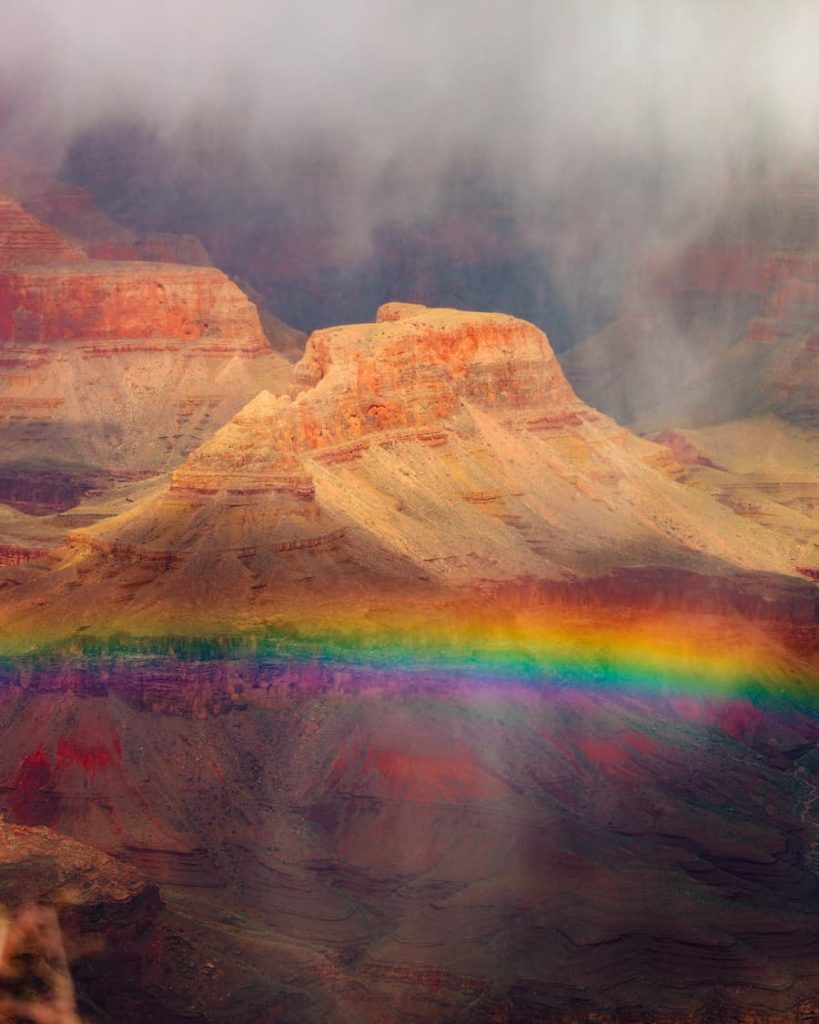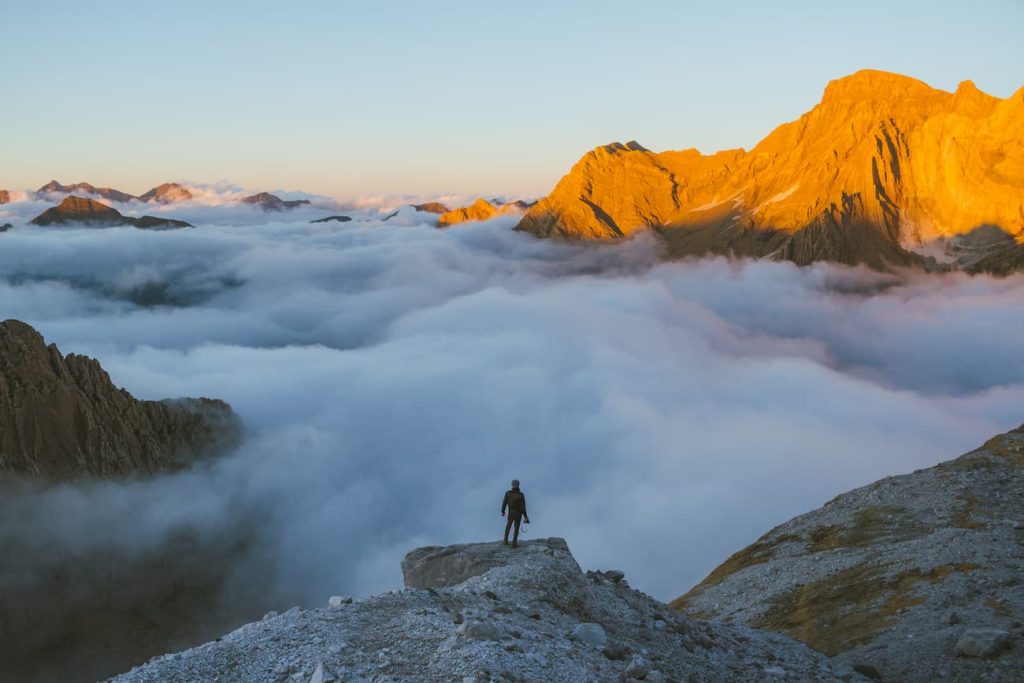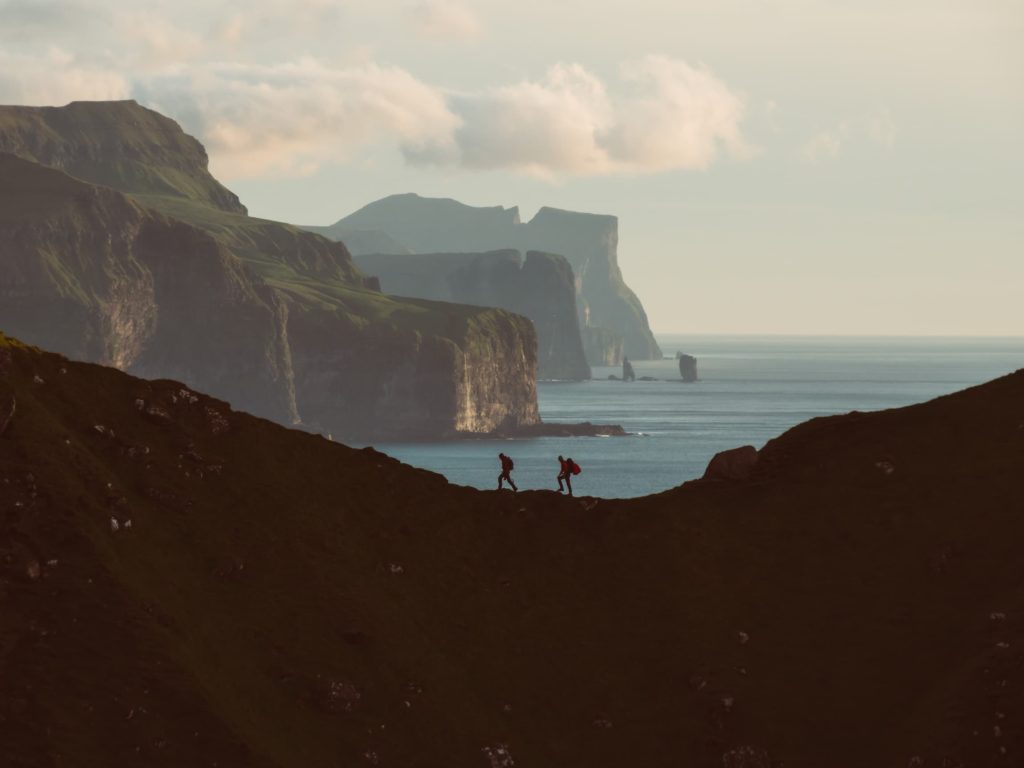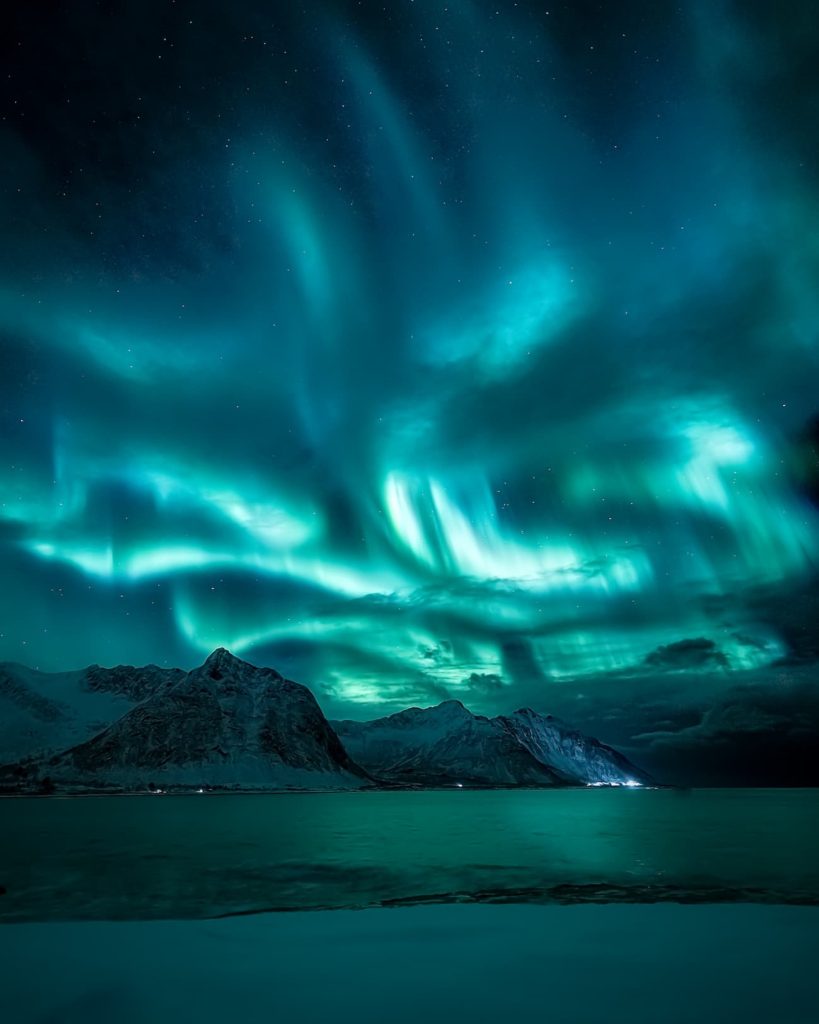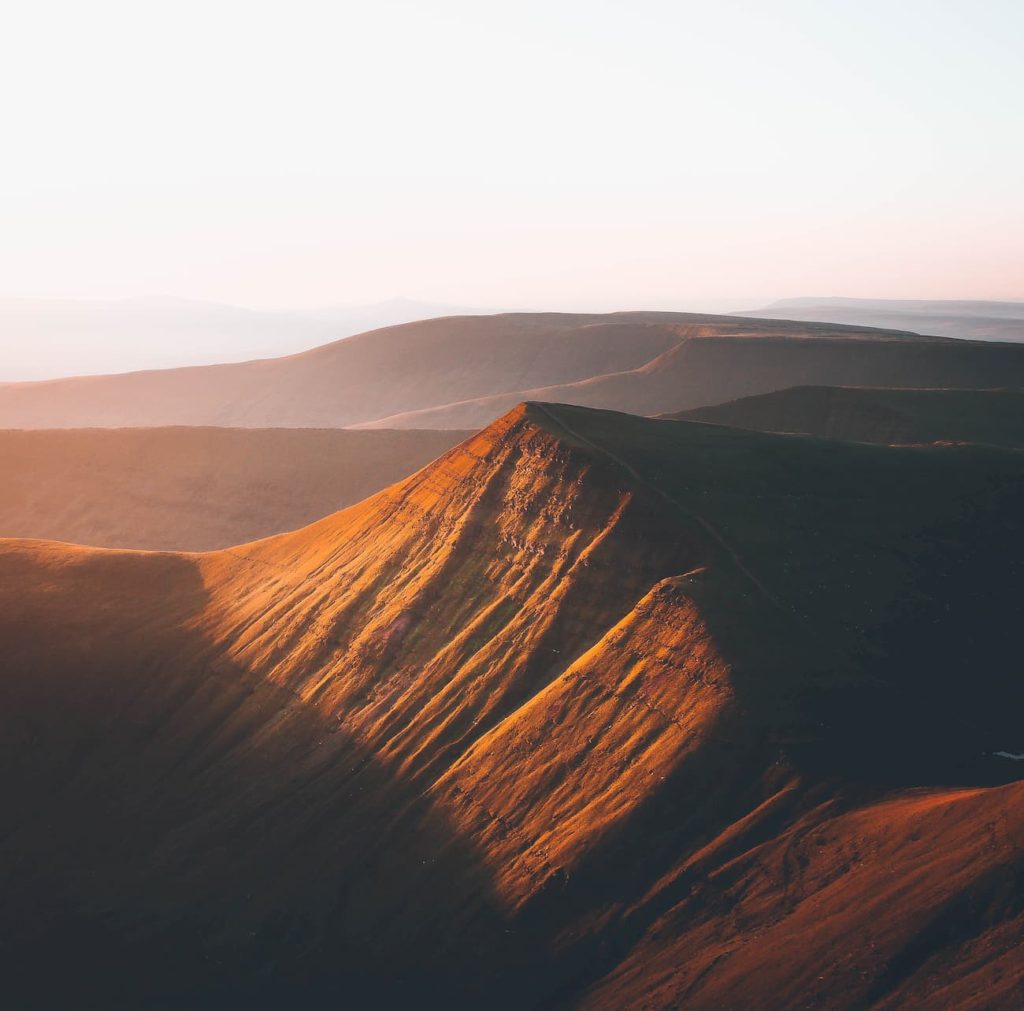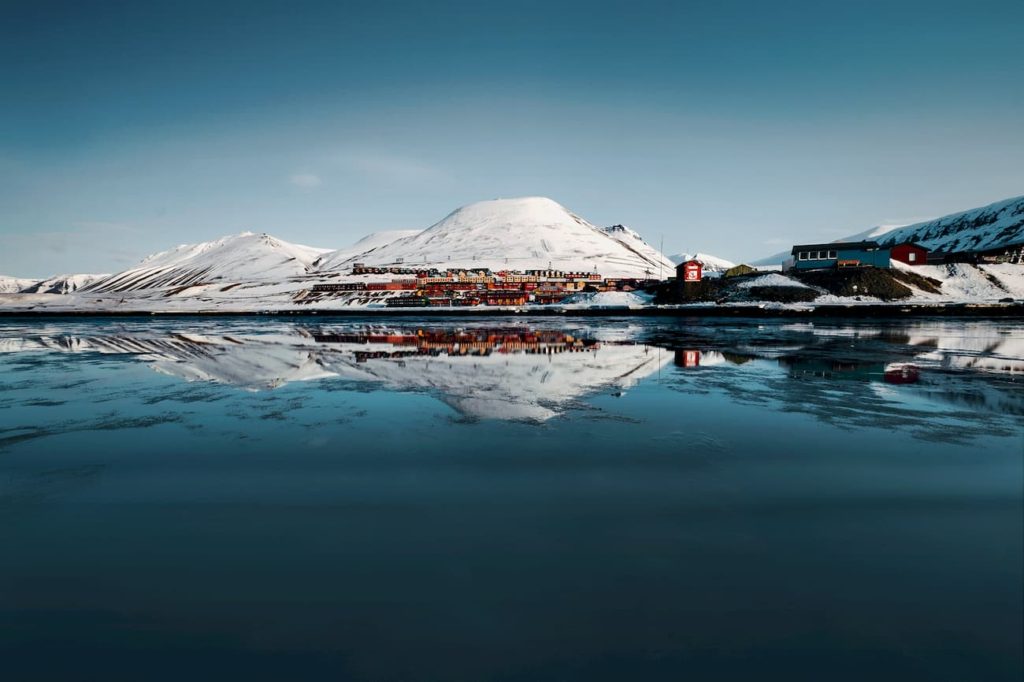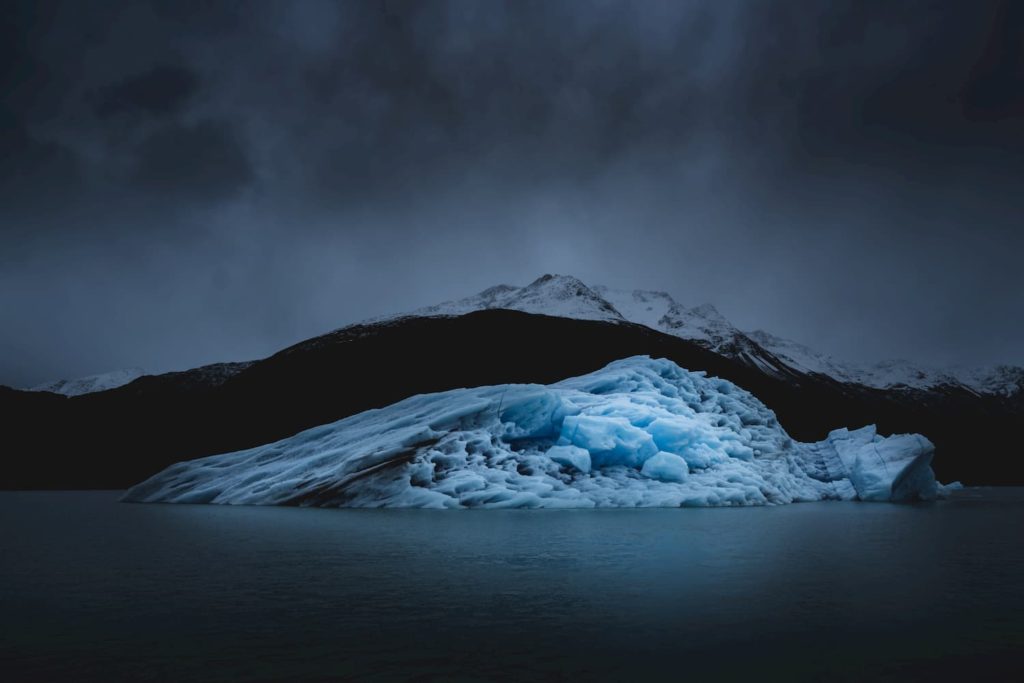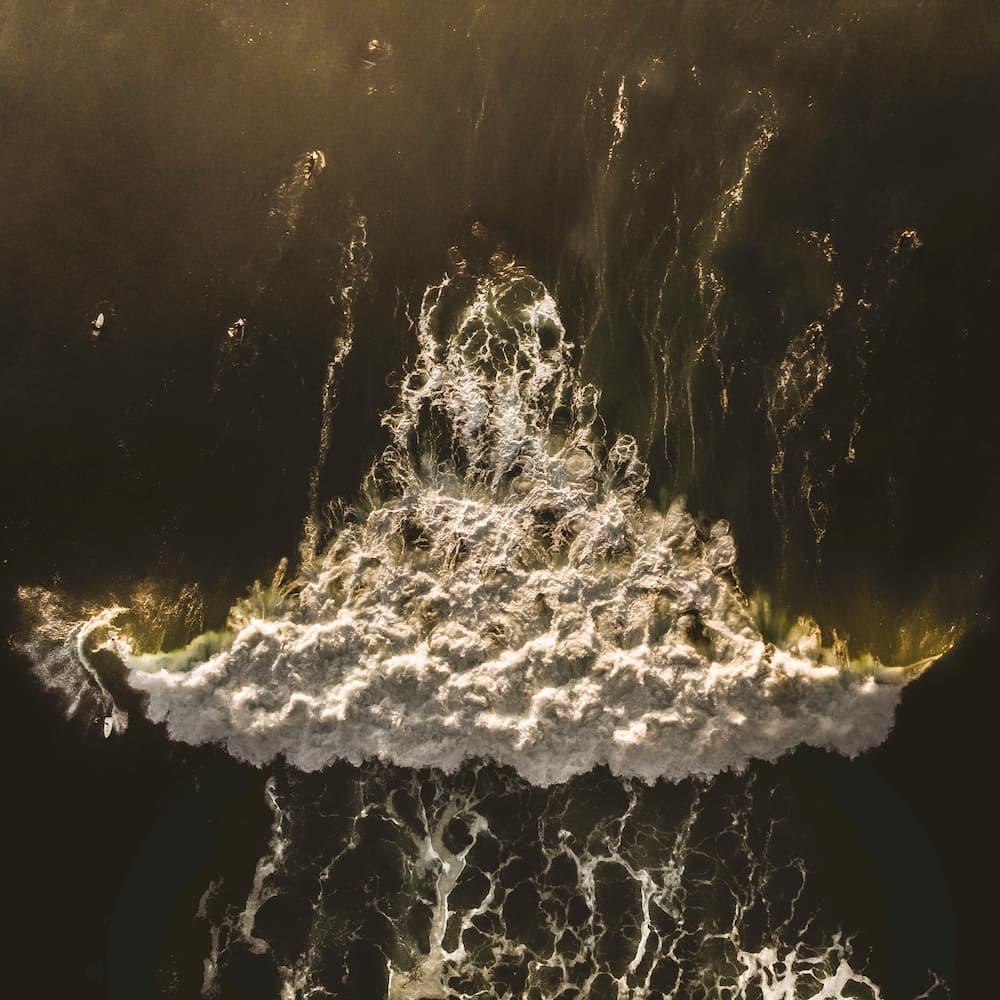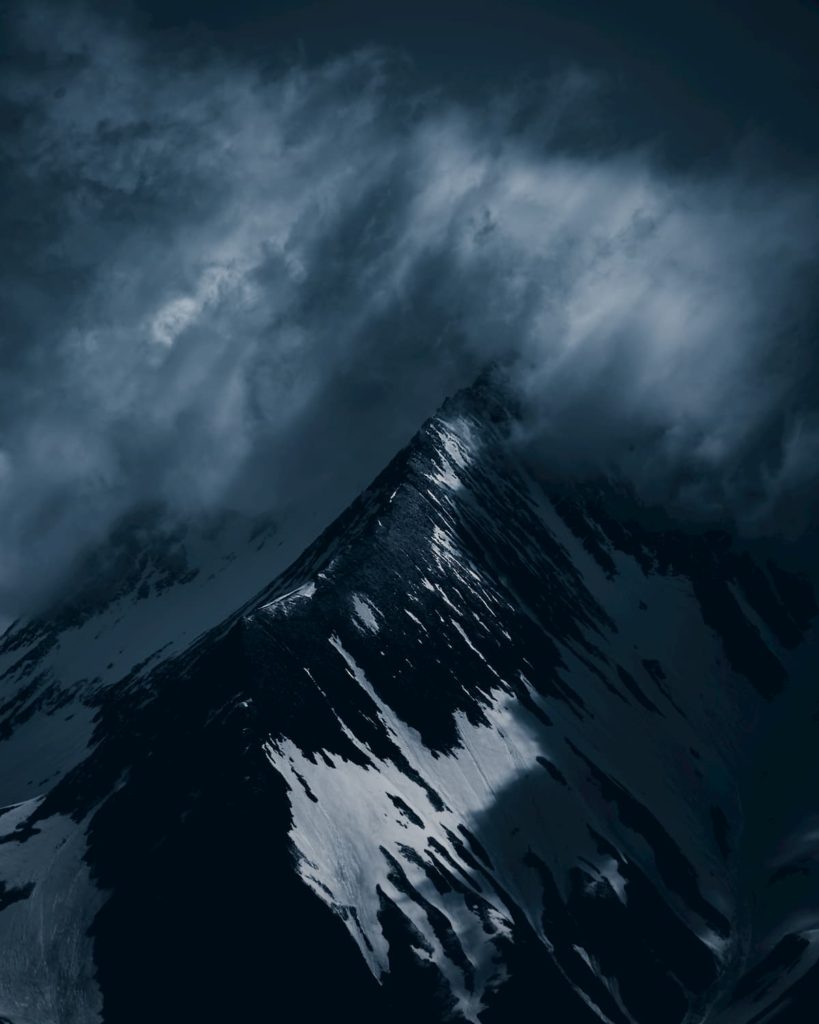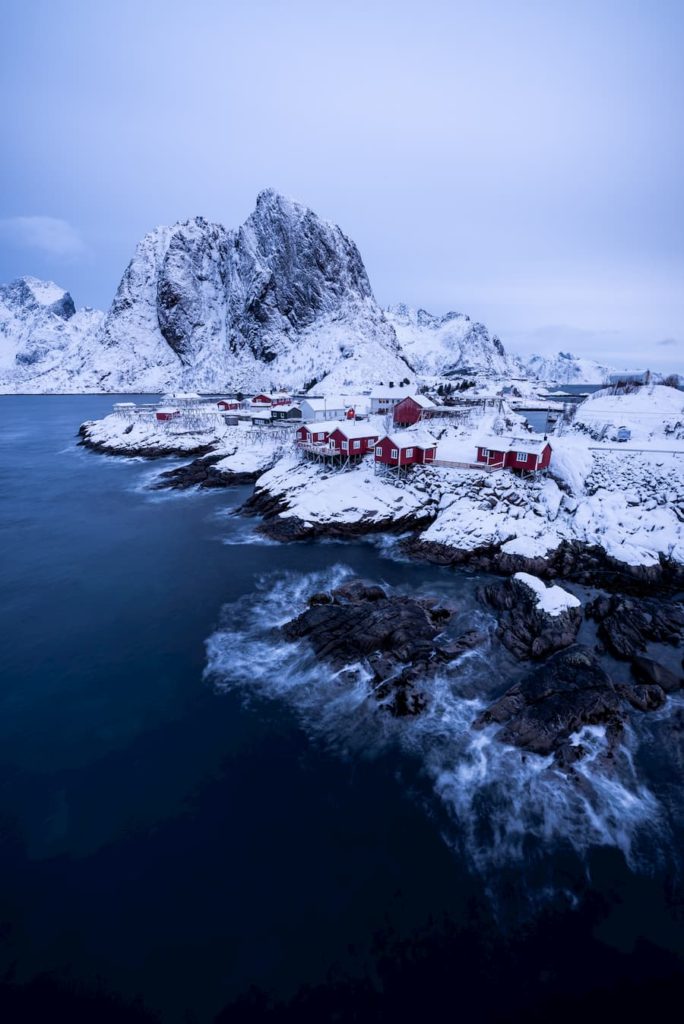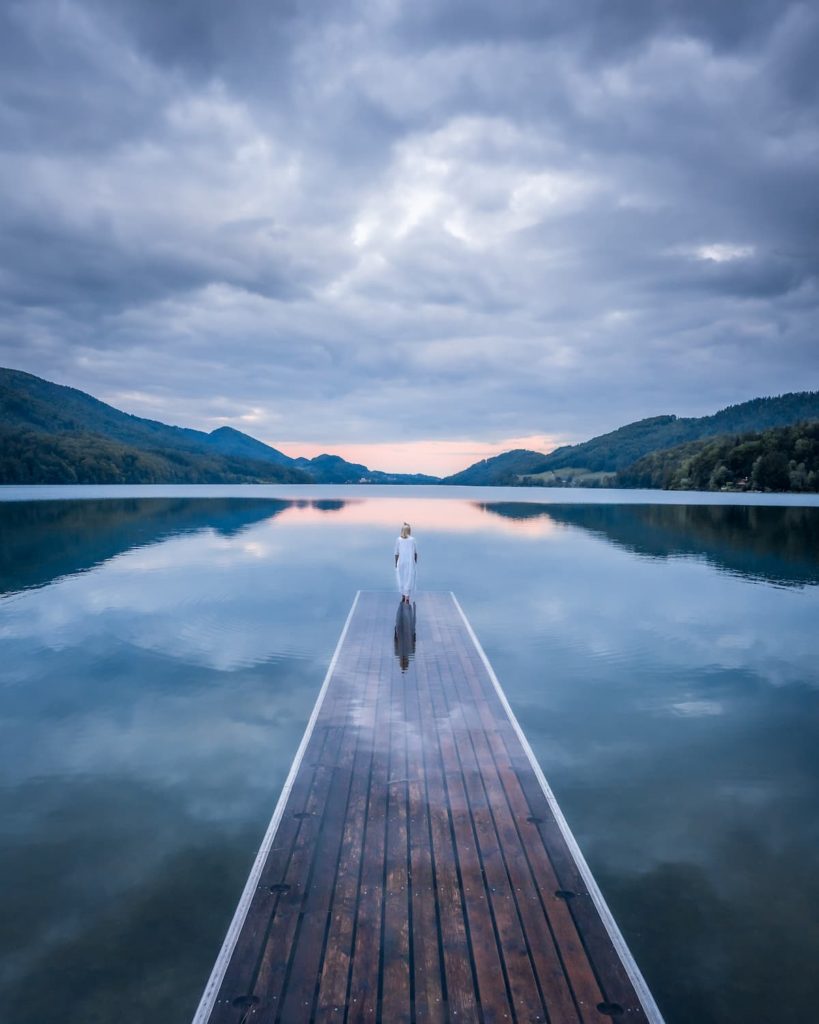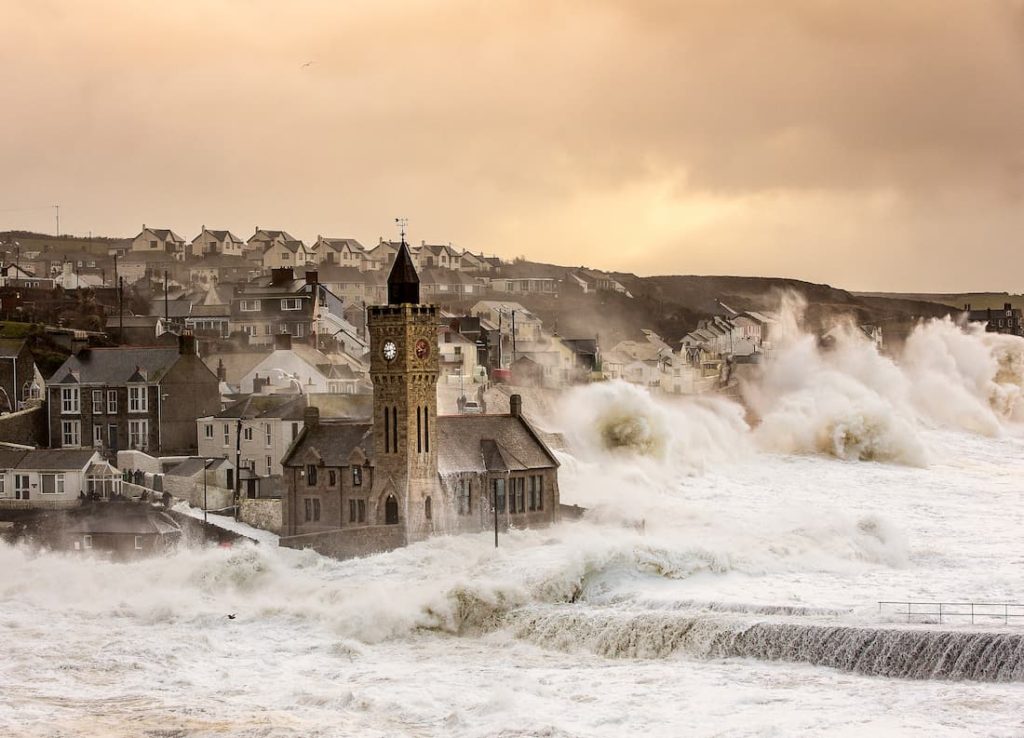
Bruno Fantulin
@bruno.fantulin
Photographer based in Croatia
A growing passion and following your calling
I firmly believe that for all of us, from an early age, there’s something that specifically catches our attention. This can come to the surface earlier or later, in one way or the other. But there is curiosity, passion, and talent – and it should be nurtured to grow.
My grandfather was a photographer, numismatist, and philanthropist. I believe that I got a gift from him when it comes to photography. My true love for this craft started by observing the weather as a child. My grandfather would always know what to call certain clouds, and whether they would bring snow, rain, or something else…
"Lightning and storms are largely responsible for the fact that I started photography and went on various adventures."
The key years for me with regard to my passion were 2014 and 2015. In the summer of 2014, I was walking along the coast in a small town called Srima, near the city of Šibenik in the region Dalmatia, Croatia. I noticed lightning in the distance, which I then tried to capture with my iPhone 4. It was the first time doing this, and it was of course unsuccessful. That summer there were a few more days that I watched the lightning and their arrival, and I started to photograph more and more everything that was happening in the sky. My imagination and desire then started to grow.
When my last school year in elementary school began, I became increasingly observant of the sky and I also began to follow the world’s meteorological models and everything related to the weather. In 2015, I got my first camera (Nikon D5200) and I was overjoyed to finally be able to take more serious photos.
"When I enrolled in high school for graphic design and media production, I very quickly came to the conclusion that photography would be what I want to do professionally."
During my schooling, my photography expanded to landscape photography, but also to documentary and sports photography. Nevertheless, lightning, storms, and extreme weather conditions have definitely been number one in terms of me and my photography. I played football for 12 years until I was 18 but stopped because I realized it didn’t make sense – I would play a game and watch the clouds all the time and I always carried the camera to the locker room in the summer months just in case a storm cloud came. The easiest way to explain why I did not continue to play football but switched to photography is that for football or running I would never wake up early and go to train.
Photographing and just watching the storm is something that cannot be described in words, even if you have experienced it countless times. When you look at that heavenly spectacle, when you feel the charge in the atmosphere, the voice of Mother Nature…that’s when the real emotions are revealed and those are the moments you will remember. It was these amazing powerful instants during all these years that inspired me to search for them more and more.
It used to be quite difficult to keep track of every storm and chase them because I didn’t have a driver’s license and I had to rely on and depend on other colleagues whether I could go to chase a storm or not. I am forever grateful to myself that I never let those “limitations” hold me back. There’s as well the fear that is almost always present. I like to take risks and I am convinced that I don’t want to miss out on adventures or stories just because of the fear – which is often imaginary. And finally, I had to be very stubborn and dedicated to not giving up despite it sometimes seeming to make no sense anymore. Hours and hours are spent waiting for storms in the cold, strong winds and all possible weather conditions, and every time I tell myself, “you have come too far and you have gone through too much to give up now.”
"I do not even regret that I didn't go to clubs with my friends or had to say no to other activities sometimes – I spent my time taking photos and upgrading myself as a person."
Becoming professional about storm photography
As a result of my focus and dedication, I received various awards for my photographs and my photographs were regularly shown on almost all domestic TV shows and weather forecasts, as well as in various magazines and newspaper articles such as Daily mail, Xinxua, 24 SATA, Dnevnik.hr, and many more… My artistic career became more serious by the end of 2019, when I started working with the largest photo agency in the Balkans, Pixsell. I can say that I went through all kinds of shootings and it helped me a lot in my further progress, not only in nature photography but other genres as well. Somewhere deep inside, I have felt from the very beginning that this is my calling.
Throughout this period, I realized that without the right practice in the field, you can’t get the right result, regardless of the fact that you have listened to or watched countless lectures/tutorials. On the contrary, they helped me to improve what I was doing incorrectly. I have absorbed all advice from older and more experienced colleagues over the years. Photographing lightning, in particular, is not easy at all, for several reasons. First of all, it often happens that the rain starts before the lightning itself, and in that case, there is nothing left but to get in the car and wait for a new opportunity. In these cases, it mostly happens that I come home with not a single photo, despite the long and difficult journey of chasing a storm. The second reason is the level of danger that comes with lightning and storms in general. You must be aware if you ever embark on such an adventure, that it is very important to stay calm and make the right decisions at the right time. At no time should you underestimate nature and the situation on the ground. You also need to understand the storm movements and their behavior well enough to know what steps you need to take next. Almost all the time you need to be up to date, following the radar and satellite imagery that reveals the movements of storm clouds, and the indicators of the strength of the storm.
The preparation for the chase starts from home where I follow the meteorological models on the computer that indicate when the cold front or cyclone will happen, and I try to recognize from experience what could happen, and of course, where it would go. I also consult with colleagues and local meteorologists. On the day of the lightning and the cold front, you should generally be ready and arrive at the location as soon as possible, at least 2 to 3 hours before so you can follow the development of the situation. The applications I use most often are Windy and Wetter Online, which are really great and accurately show the development of the cloud through the animation and the strength of the storm. There is also one application that I follow only for lightning and that is Real-time Lightning Map and some use Blitzortung. In real-time, they draw dots that represent lightning strikes at that very moment in a certain area, and you can follow the path of the storm according to the age of those dots: Brown is the oldest, and the closer you get to yellow, the newer the lightning.
"As far as photographic equipment is concerned for this type of photography, a tripod is mandatory."
Besides, I use a 24-70mm F2.8 lens almost all the time, in exceptional situations I use 14-24mm and 70-200mm. What is very demanding when you are in the field and photographing lightning are the settings, as they change with the arrival and evolution of the storm. As a rule, when you have a nice cloud structure, put an as short exposure as possible so that the cloud structure does not get lost, maximum 6 seconds. In situations when the cloud is far away you can freely raise the ISO up to 1000, depending on the situation. If the cloud emits a lot of lightning then reduce that number so that the cloud and lightning would not “burn” your photo. I always keep the aperture around 6.3 in such situations, until the storm comes closer to you. When it is really nearby, you must put the aperture at least at 9, and preferably I set it up to 11 to make sure that my close lightning strike is well exposed. You also need to put your ISO sensitivity at around 100 when the storm comes, and then you don’t touch it anymore. As for the exposure, you can extend it to 20 to 30 seconds if there is no nice cloud structure.
The above is applicable to storm hunting at night. For lightning hunting during the day, there is a device called a lightning trigger and it can be ordered online for about $150. It has a sensor that detects light or lightning, so it takes a photo when it detects it. The shutter speed should then be a maximum of 1/60, but in that case, it all depends on the light. If there is enough, you will need an ND filter that will darken the whole scene as there will not be enough f22 in combination with ISO 100. The trigger is the greatest pleasure to use at dusk during the golden hour.
When it is time for the last part, post processing, I aim to show the scene as realistically as possible, without some wild additions of color, unreal contrast, or removal of anything. I like to correct for some shortcomings, mostly around the light, to make the scene even more effective. When editing a weather photo where lightning is present, I can make a composition of two or more photos which is natural for me because it really happened, but at the same time, I don’t like to exaggerate with that. In landscape photography, however, I tend to make a composition for the sky and a second for the foreground in most cases, or when I want to make a focus stack where I take three photos, on the first one I focus on foreground, on the second midground, and on the last background and later merge these so sure the whole photo will be sharp. Honestly, I have rarely done this procedure so far as I am more focused on weather photography which usually consists of one photo (or 2 or 3 when you want to blend through a luminosity mask a certain part of the photo). In both aspects of photography, as far as the rest of the processing is concerned, I only play with the basic elements of photo processing.
Chasing the storm
To give you an idea of what chasing a storm looks like, let me give an example. It was the best storm of 2021 and the worst in terms of lightning. I left Zagreb to go to Zadar where I waited for the front. The trip lasted a little over 3 hours. In Zadar, the storm came from the opposite side and it surprised me, but I did not complain as there was beautiful lighting. Then I drove 30km through the same storm all the way to the Maslenica Bridge, which is known because the strongest gusts of wind have been recorded in this area. The strongest gust of wind from the NNE direction in Croatia is recorded during a storm on December 21, 1998, from this Maslenica bridge, with a gust of 248 km/h (69.0 m/s) ). After arrival, I was greeted again by the same storm, but it had become even stronger. Then came the crucial moment… I looked at the satellite image and I couldn’t believe it! It was as if someone had drawn a line of cloudiness and serenity. Only one thing came to my mind at the moment, positive lightning! To me, this is the most beautiful lightning where stars are visible and lightning comes out of the clouds and spreads in all directions. Also, this is the safest type of lightning in most cases because you are far away from the storm (I was at least 80km from that storm). Of course, if some isolated storm appears near you it can be dangerous too.
It took me a little over half an hour to reach the next location, which was the Fortica Fortress. This fortress is nearby the Pag Bridge, which officially holds 2nd place in the strongest blow of the bora (a strong, cold, dry north-east wind blowing in the upper Adriatic) which was 234.72 km/h ( 65.2 m/s). I had no idea when I left Zagreb that I would watch the constant lightning for more than 7 hours, from 9 pm until 4 am! For me, it is a good and well-spent day and a good night out, much better than any club and morning hangover!
"And what kind of storm chaser would I be without a single photo of the lightning I'm most proud of?"
It was not the money shot that I expected because that shot escaped me in literally a few minutes! I left that day from Zagreb to Zadar around 4 pm to arrive in Zadar around 9 pm, so several hours before I expected the storm to arrive. When it comes to photographing storms I developed a very good instinct that has not deceived me many times so far, so relying on instinct, I decided to start one of the first longer solo storm chases. I expected the storm to develop a little south of Mali Lošinj, which is 60 km air distance in the northwest direction from Zadar, and that’s exactly what happened around 2 am. In the distance, I watched the constant flashes and even very small lightning bolts. When the storm approached Zadar around 4 am, everything happened quickly and I practically didn’t take any good photos because the rain started quite early.
So, I immediately went to Šibenik to one of the viewpoints and I didn’t have much time as it takes an hour to drive to the viewpoint and the driving was made difficult by the storm that followed me almost all the way to Šibenik. I managed to get out of the storm cloud some 20km before the city. Unfortunately, I thought that I could guess the location, but that was not the case and I lost so many precious minutes in Šibenik. Then, of course, I immediately set off for Primosten, which is protruding from the coast, where I expected a direct hit by the storm. The whole time I was driving with a practically defective car because my anti-slip system, ABS, turned on.
When I got to Primosten I went to a nearby viewpoint to catch the upcoming storm. While I stopped, took my photographic equipment out, and worked on the settings, incredible lightning struck just behind the city, I couldn’t believe what I was missing! When I finally set up, the only thing I caught were these two lightning bolts. After being a bit disappointed, I returned to Srima near Šibenik, at my grandma’s, which took me 45 minutes. I went to sleep around 7:30 in the morning – Adrenaline is something special…
There are some lessons to be learned on each trip, but the most important thing I have learned forever is not to rush for anything because I put myself in danger, and always listen to what my heart tells me (not my “hot head” at that moment). I would constantly chase like a headless chicken everywhere without stopping and thinking first, so I could easily slip off a cliff into the abyss or suffer from a storm when I am not near a safe place to shelter. But expertise comes with time, practice, and experience, both good and bad. I’m still young and I will learn a lot from nature and life in general. Another rule, which applies to every human being even when not photographing, is that I have respect for nature and I respect her in my chasing and photography adventures.
Croatia
Besides storms, I also shoot landscape photographs. How could I not when living in such a beautiful country that is Croatia? It is a small country but it has so many amazing places that you can’t even imagine it. There are several spots that are my favorite:
Plitvice Lakes are certainly not only a Croatian but also a world phenomenon, and most tourists gather there throughout the year. There are 16 lakes in the national park with over 90 waterfalls and wherever you walk at any time of the day, the surroundings will take your breath away. Veliki Prštavac is for me the most beautiful waterfall in the park and is the second-highest, with a single drop of about 28m.
Plitvice Lakes has two parts, upper lakes (entrance 2) and lower lakes (entrance 1). The upper lakes are mostly closed in winter due to snow and ice and the level of danger is extremely high. I took a photo here which I am extremely proud of. That day (in January 2021) 45 cm of snow fell on Plitvice. The snow stopped during the morning and the sky began to clear. I arrived around 10:30 by car in front of entrance 2. It usually takes about an hour of easy walking to the lookout point I wanted to go to but that is when it is dry. This time, it took me as much as 4 hours of struggling through 45cm of snow, and to make it worse, I had to go through a lot of broken and fallen branches as well as icy trails where, if you slipped, you would take an immediate Wim Hof cold shower.
I didn’t have the most ideal equipment, so it was quite cold for my feet, but that’s less important. I somehow managed to arrive at the lookout at around 4 pm and nature then treated me to a beautiful sight, as you can see. I was coming back in the dark, but since the moon was almost full, it lit up the road nicely. I finally came home, exhausted and fulfilled, around 9 pm in the evening. I will remember that day for a long time because having that type of nature, covered in snow, only for yourself is something phenomenal and special.
"The second location is the island of Pag, and I would definitely add Velebit (mountain) which rises right by the sea."
Pag is the 5th largest island of Croatia. The island is often associated with Mars due to the lack of vegetation, and there is even a trail called Life on Mars. The island is also known for its numerous local specialties, the most famous of which is Pag cheese. The reason why the island is attractive to me is certainly that it offers countless locations for photographing storms, and I myself have yet to fully explore it.
I would like to mention my father’s hometown, Šibenik, as a third location. I spend my summers in this beautiful city and very often I follow storms from here. There are many islands in the vicinity of Šibenik, which adds up to its attractivity. There is also another national park nearby, and that is Krka.
Finally, I would like to mention the most remote island in Croatia, Palagruža. I spent a wonderful three days there in August 2021, watching the island and the endless blue of the sea as if you were in the middle of the ocean, and chasing the perfect weather conditions for photographs. I could talk for days about how special this island is! I am happy that I managed to reach it at all because the weather there can be very wild, referring to the wind and multi-meter waves.
Every part of Croatia is special in something and there are really a lot of locations for every type of photography, especially for nature. Istria, Slavonia, Lika, Dalmatia, and their mountains, rivers, waterfalls, springs, beautiful beaches… You can find anything here in Croatia!
Would you like content like this sent to your inbox?
NOMADICT
ART GALLERY
THE LATEST STORIES
WRITEN WITH PASSION TO INSPIRE YOU
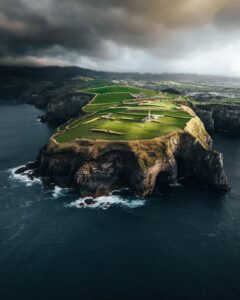
Photo tour in Azores, Portugal
Join us in the Azores for a unique photo tour, where you’ll elevate your creative skills with expert guidance from Ronald Soethje, Bruno Ázera, and Nomadict.
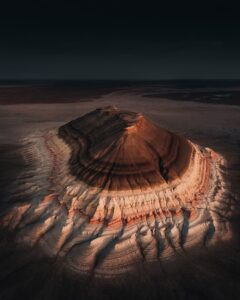
Forest Kai (@forest1kai): Photographer based in the US
In this article, Forest shares how years of chasing scale, silence, and raw landscapes shaped his approach to photography, from the deserts of Kazakhstan to the volcanic ridges of Iceland. He talks about how he uses light, texture, and vast negative space to create images that feel both intimate and overwhelming.
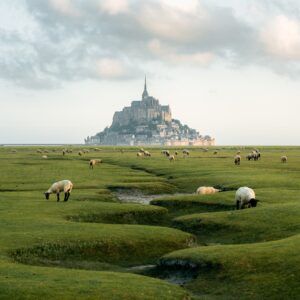
Simon Hechtbauer (@roamwithsimon): Best of the Week 32 at #nomadict
Simon shares the journey behind his photography, from early inspirations to field techniques, editing, and the story of the winning shot that shaped his path.

Miroslav Maršík (@miromarsik): Photographer based in Czech Republic
In this article, Miro shares how his love for cinematic music evolved into a deep passion for photography and how he uses light, color, and atmosphere to turn the streets of Prague into living film scenes.

Aurora photography panorama workflow: A guide to camera settings, editing, and color
In this article, Stefanie reveals how her background in physics sparked her passion for astrophotography and how she blends science with creativity to capture the beauty of the night sky. Readers will discover her approach to color, contrast, and editing, as well as her aurora photography workflow.

Yhabril (@yhabril): Best of the Week 33 at #nomadict
Spanish photographer Yhabril captures the profound connection between humans and the mountains that shaped him. Growing up in the Pyrenees, his work bridges outdoor sports, landscapes, and celestial scenes — often blending athletes, moonlight, and wilderness into striking visual stories.

Ariane Totzke (@besondersschwierig): Photographer based in Switzerland
In this article, Ariane shares how photography helped her navigate personal challenges, connect authentically with people and animals, and develop a philosophy rooted in empathy and artistic freedom. Readers will also discover her ethical approach to wildlife photography and her trusted equipment for both camouflage techniques and cameras.

How to photograph Dutch tulip fields: A guide to light, gear, composition, and colors
Discover how to photograph Dutch tulip fields in their most magical light. From choosing the right gear and lenses to mastering composition, color, and aerial perspectives, this guide shares creative techniques to capture the beauty of the Netherlands’ tulips. Learn how light, color grading, and proportion bring emotion into every frame.
